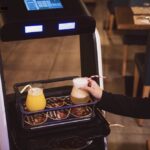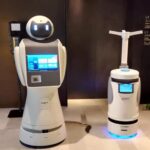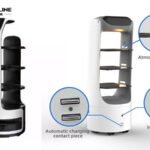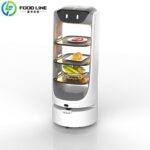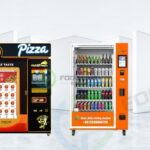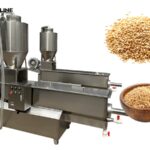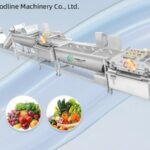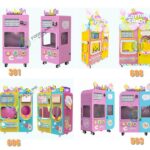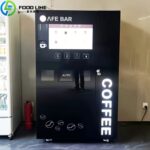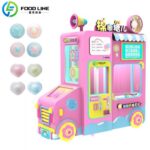If you’re running a busy hotel, every minute counts—and every surface matters. The Foodline Hotel Cleaning Robot helps housekeeping teams keep public spaces consistently clean, reduce repetitive manual work, and deliver the polished first impression guests expect.
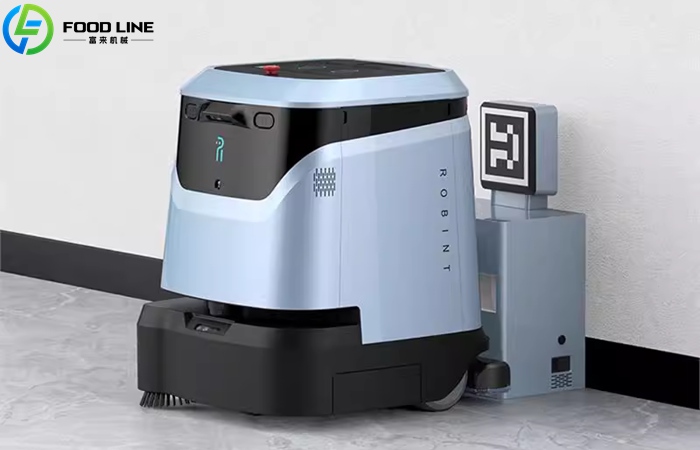
Foodline Hotel Cleaning Robot For Sale
The Hotel Cleaning Robot is an autonomous cleaning solution designed for hospitality environments. It navigates high-traffic spaces, automates floor care tasks like vacuuming or scrubbing (depending on the configuration), and docks itself to recharge and refill when needed. The result: cleaner corridors, lobbies, ballrooms, and back-of-house areas—without pulling staff away from high-touch, guest-facing tasks.
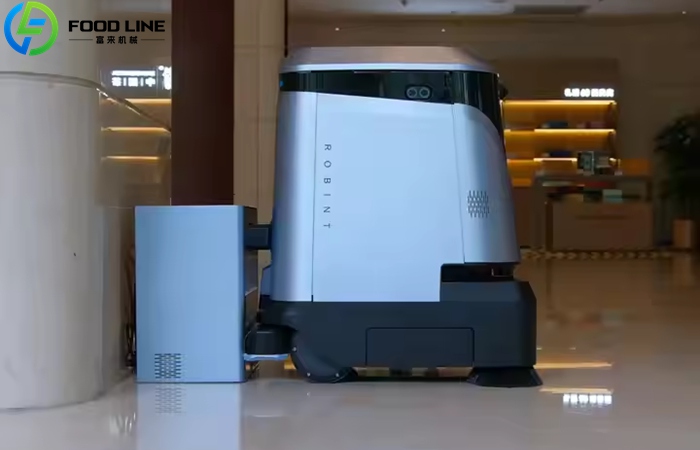
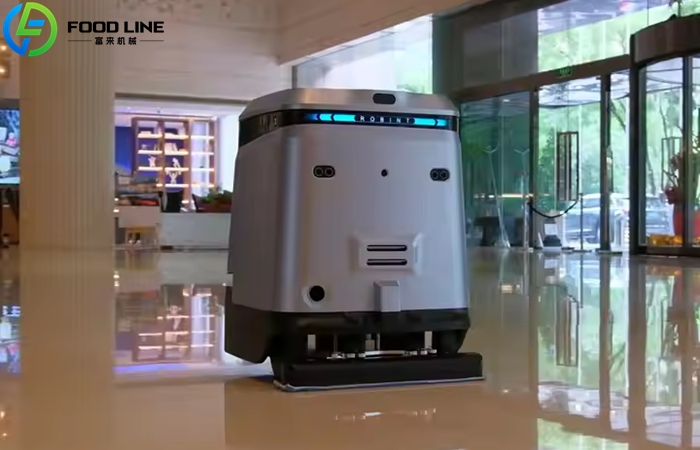
Contact us to get free quote. Tel/WhatsApp 008613598866720
Specifications of Fully Automatic Cleaning Robot Vacuum Cleaner
| Specification Category | Details |
|---|---|
| Robot Body Size (LWH) | 595mm * 540mm * 715mm |
| Weight | 50 kg |
| Clean Water / Sewage Tank Volume | 17 L / 14 L |
| Battery Capacity | 24V 40Ah, powerful lithium battery with a total capacity of 960 Wh |
| Cleaning Modes | Sweeping, Scrubbing, Pushing, Vacuuming, and Mopping |
| Cleaning Efficiency | 0 ~ 1440 m²/h (576 m²/h as default) |
| Minimum Wall Spacing | 0 cm |
| Travel Speed | 0 ~ 1 m/s (0.4 m/s as default) |
| Battery Life | 2.5h (scrubbing), 5h (sweeping/vacuuming/mopping), 12h (dust pushing) |
| Noise Level | ≤ 70 dB |
| Cleaning Width | Sweeping/Scrubbing/Vacuuming/Mopping: 400 mm; Dust Pushing: 500 mm |
| Interactive Mode | Screen / Voice Control |

Advantages of Self-Cleaning Vacuum Cleaner for Floor Cleaning
- Consistent cleanliness: Robots follow defined routes and schedules, delivering the same standard every time.
- Staff augmentation: Free your housekeeping team to focus on guest rooms, VIP setups, and quality checks.
- 24/7 readiness: Off-peak and overnight cleaning keeps entrances, corridors, and lifts guest-ready by morning.
- Cost control: Automating repetitive floor care helps reduce overtime and contractor spend over time.
- Guest experience: Quieter operation and a spotless lobby make a strong first impression.
- Data-driven oversight: Digital logs, run histories, and heatmaps support audits and brand standards.
Features of Foodline Hotel Cleaning Robot
- Autonomous navigation: LiDAR/vision mapping, obstacle avoidance, and smart path planning for narrow corridors and busy lobbies.
- Auto-docking: Returns to a base station to recharge; select models may auto-empty dust or auto-refill water.
- Multi-surface care: Options for vacuuming, sweeping, and/or scrubbing for hard floors and low-pile carpets.
- Quiet operation: Designed for guest areas where low noise is critical.
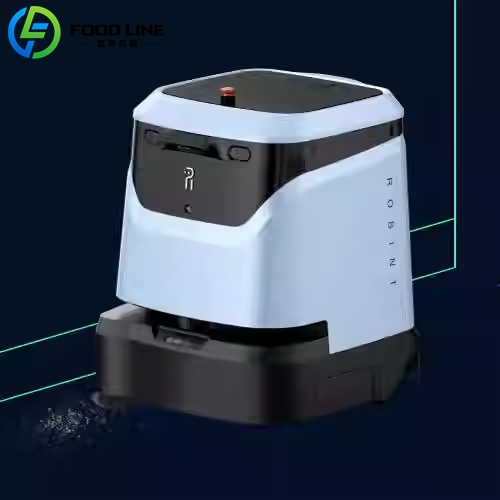
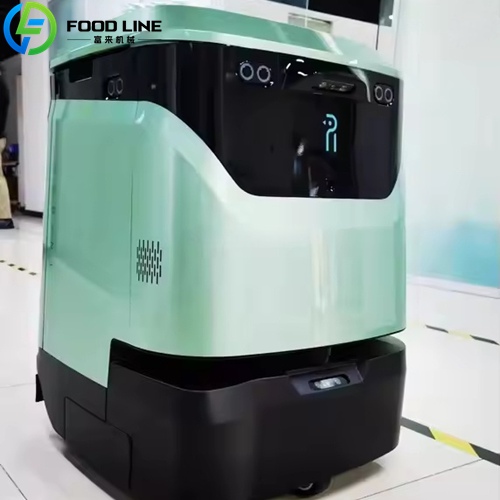
- Safety-first design: Bumper sensors, fall detection, and compliance with local safety regulations.
- Fleet management: Web or app-based dashboard for schedules, zones, and reporting across multiple robots and properties.
- Hygiene add-ons: Depending on model, optional modules (e.g., HEPA filtration, fragrance, or UV-C for defined use cases).
- Integration options: APIs to connect with facility software or, in some cases, elevator interfaces via approved controllers.
Applications of the Commercial Automatic Floor Cleaning Robot
- High-traffic public spaces: Lobbies, corridors, foyers, and function floors that need frequent touch-ups.
- Ballroom and meeting venues: Pre- and post-event turnarounds where speed and consistency matter.
- F&B zones (front-of-house): Restaurants, lounges, and cafés during off-hours for daily resets.
- Back-of-house: Service corridors, loading bays, and staff areas to maintain hygiene and safety.
- Elevators and multi-level coverage: With the right integrations and permissions, robots can operate across floors.
How it works (day in the life)
- Map and zone: Your team or a Foodline specialist maps the property and defines cleaning zones and no-go areas.
- Schedule: Set automated cleaning windows around occupancy, events, and quiet hours.
- Run and adapt: The robot navigates in real time, avoiding guests and obstacles, and resuming routes after detours.
- Dock and report: It returns to the base to recharge and logs run data for supervisors.
Compliance, safety, and guest comfort
- Guest-safe navigation: Slow approach speeds, wide sensor coverage, and audible/visual cues when appropriate.
- Accessibility: Designed to navigate ramps and thresholds; confirm local accessibility requirements.
- Chemical handling: When scrubbing, follow brand-approved detergents and SDS guidelines.
- Privacy and security: No cameras recording personal data unless specifically configured; follow your data policies.
- House rules: Define no-go zones (e.g., near concierge desks at peak times) to minimize guest interruptions.
Frequently asked questions
- Can it operate around guests?
Yes. It’s designed for public spaces and adjusts paths in real time. Most hotels schedule runs during quieter periods for minimal disruption. - How loud is it?
Noise levels vary by configuration. In general, hotel-focused robots are engineered for quiet operation suitable for lobbies and corridors. - Does it ride elevators?
It supports elevator integration via approved controllers and building permissions. Verify compatibility during the site survey. - What about carpets vs. hard floors?
Models and attachments differ. Our robots specialize in hard-floor scrubbing or sweeping; others focus on vacuuming low-pile carpets. Confirm the right configuration for your surfaces. - Is there a risk to children or pets (in pet-friendly hotels)?
Safety sensors detect obstacles and slow or stop as needed. As with any equipment, supervise initial runs and use no-go zones in high-activity areas. - How often does it need maintenance?
Expect regular brush/pad changes, filter swaps (if applicable), and periodic software updates. Foodline will specify maintenance intervals for your model. - Can it clean guest rooms?
Robots typically excel in predictable, open areas. Guest rooms—with furniture moves and personal items—are usually better handled by staff.
